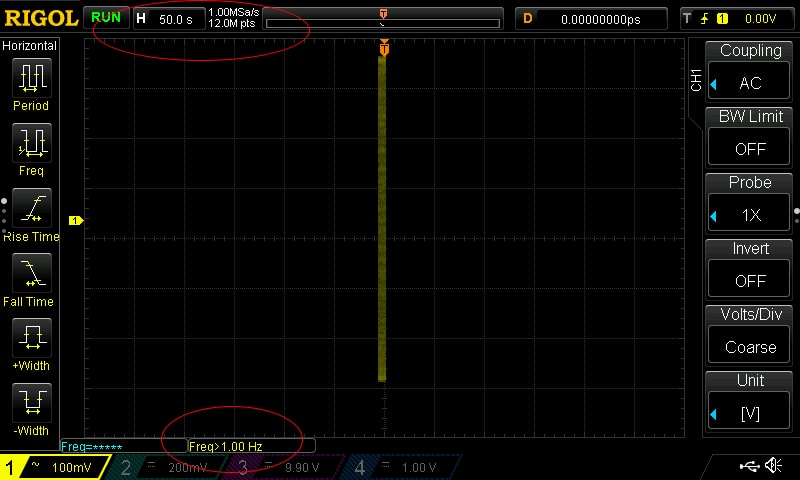Are you sure about that? It's impossible to believe any scope would be that hamstrung.
In chasing down the sample rate limit, I have learned that the DS1104Z has some pretty bizarre behavior when changing its sample rate. The formula the scope uses to select the sample rate when there is only one channel active and 12 Mpts selected is:
Sample_rate = 12 Mpts/(12*Time_scale)
So, I set the Time_scale to 50 secs with only channel one selected (using it for triggering). I then waited several minutes to see if the sample rate changed. It didn't (Figure 1 shows the result).
Figure 1 -

I then left the room for several minutes and returned. In the interval, the sample rate had changed to 20 Ksa/s.
It seems the scope re-calculates sample rate slowly when the Time_scale is long, which is why I thought it would only go as low as 25 Msa/s at 6 Mpts (I had 2 channels enabled when I observed those values).
Given this new data, I could capture 50 second samples at 20 Ksa/s or 5 second samples at 200 Ksa/s. In any case, eventually I want to observe longer intervals than this. So, 2 questions arise: 1) how do I determine the phase noise bandwidth during a 50 second interval; in particular, will a 20 Ksa/s rate be sufficient to obtain an upper limit on phase noise bandwidth over 50 seconds (given the Nyquist limit, this would assume phase noise bandwidth is less than or equal to 10 KHz), and 2) will the phase noise bandwidth in these sub-minute samples accurately represent the phase noise bandwidth in longer intervals?
My guess about the first question is 20 Ksa/s is probably not sufficient to achieve the objective. My guess about the second question is no.